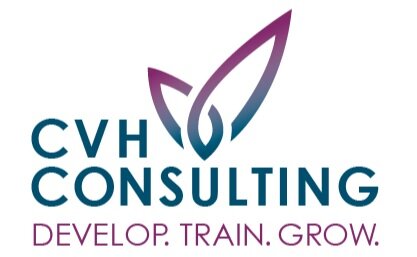Nail It! 5 Tips for Your Next Presentation
Who hasn’t sat through a training or meeting facilitated by someone that seems to know nothing about how to present? Yes, they’re experts — they know the content, but the delivery isn’t effective, to the contrary.
To be fair, many are not taught these skills but are expected to present for their jobs. Here are a few tools to help you stand out during your next speaking engagement.
1. Know Your Audience, No Really
I have little doubt that you have heard this before. My question to you is how much do you know about your audience? Ask the organizers of the conference, event, or training for this information beforehand. Attempt to add some interactive components based on your audience (see #3). I promise a simple acknowledgment of the varying degrees of experience in the room will earn you some clout. More importantly, you’ll be able to prepare your content better and be more prepared for questions.
2. Use PowerPoint as a Tool, Not a Crutch.
I’m sure some of you are thinking, “That’s what I do!” But is it?
Things to consider:
How much content do you have on your slides?
Are you using appropriate fonts and font sizes?
Is there visual interest?
Are you overusing bold, italics or caps?
How many slides do you have in total?
It’s worth hiring someone to have a look at a few of your presentations to get a professional’s feedback. That one-on-one consultation can make a world of difference for your work going forward. Next time you’ll be more prepared, your audience will be impressed, and you’ll stand out!
3. Add Interactive Components
Common responses and concerns to adding interactive components to a presentation:
“I don’t have time.”
“What if I get someone who talks for too long?”
“My audience is too large; it’s impossible.”
Before we move on, I want you to think back on some of the best trainings or conference sessions you’ve attended. Did the presenter ask you questions? Did they engage with you and the audience? I would guess that they did.
A few ideas to help you achieve this goal:
Ask participants to answer a question by raising their hands
Add scenarios
Use video
Ask for feedback or stories from the audience
Include (easy) quizzes
Have them discuss a topic with a partner sitting close to them
These simple additions to your presentation make the learners or audience feel like a part of what you’re teaching, and you’ve taken time to listen to them.
4. Prepare
Seems obvious, right? But with our busy lives and the demands of work, it’s easy to see why people don’t have much time to prepare for presentations. With that said, I can’t stress the importance enough.
To get you started:
Know what to expect.
Make sure to ask lots of questions to the people coordinating the event.
What is the setting for the event?
How will the room be set up?
Do you need a mic?
How many people will be in attendance?
Do you have AV? Do you have a backup plan if the AV fails?
Practice!
Try to find an audience who can provide you feedback. If not, videotape yourself. If you’re new to this, get used to having all eyes on you. Practice also helps you review your content. What works? What doesn’t?
My dogs are experts on almost everything I’ve ever presented on, they make for a great audience.
5. Focus on Why You’ll Succeed
Public speaking is a fear many people have, giving yourself a pep talk or writing down a few inspirational phrases can go a long way. If you meditate or do yoga, it’s a great time to practice. Write down your thoughts and worries, and how you’ll overcome them.
Most importantly, focus on why you will succeed!
You’re the expert
You’ve done this before
You have something to offer
You’re going to help someone
Believe in yourself!
There are endless tips to help you better prepare for your presentations. Please post your favorite tips below. Don’t hesitate to contact me for a personal coaching session; I also offer group trainings for you and your staff!



